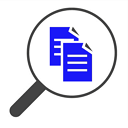Dept Keyword Research
Keyword Research Tool for Google Sheets helps to improve the results of keyword research by applying an advanced bottom-up method.
Listing updated:July 12, 2022
Works with:
872
Overview
Keyword Research Tool by Dept for Google Sheets assists in executing a comprehensive keyword research by applying a solid bottom-up method. The offered approach includes two main steps – search terms categorization in direct, related and negative categories followed by grouping search terms into specific topics. Additionally, the tool includes text analysis function which benchmarks the selected piece of text or the URL with the executed keyword research results. Each analysis step is executed in separate sheet of the same keyword research Google Sheet document. The full methodology can be found in Dept Keyword Research Tool whitepaper: https://www.deptagency.com/en-dk/download/whitepapers/the-last-keyword-research-you-will-need/ The steps for applying keyword research method: 1. After the installation of the extension, create a new Google Sheet document. 2. Navigate to Add-ons within the empty sheet, select Keyword Research Tool and click on Launch sidebar 3. Navigate to the first category at the top of the sidebar ‘Create Sheets’, select ‘Create all’ in the drop down and click on ‘Create’ button. Five necessary sheets for the keyword research will be populated: Categorizer, GroupTag, KeywordResearch, KeywordResearchOverview and TextAnalysis – the document is ready for the further analysis. 4. Navigate to the following category – Categorizer. By clicking on ‘Add’ button, you can add the collected search terms and the corresponding average search volumes (separated with the space or comma). In case you want to remove some of the search terms, click on ‘Remove’. 5. Button ‘Fixes’ should be applied when values are pasted directly to the sheet – it removes duplicates, empty rows and inserts ‘0’ when search term does not have a value. ‘Update Categorizer’ should be used once changes are made to the following sheet – GroupTag – to update the categorization. 6. ‘Sort by’ sub-section enables sorting by Grouped or Ungrouped search terms. 7. Further navigate to ‘Keyword Research’ section. Here you can add the search term to a specific group corresponding to the relevance of the particular search term or group of them by clicking on ‘Add Group Tag’. In the same way you can remove the group tag by clicking on corresponding ‘Remove Group Tag’ button. Button ‘Fix’ is used when the tags are inserted directly in the sheet to remove empty lines or duplications in the lists. 8. Each time the changes to groupings in GrouTag are applied, the ‘Update Categorizer’ button needs to be clicked in order to apply new groupings in the Categorizer sheet. 9. Once all search terms in categorizer are categorized via GroupTag sheet, the next phase of the analysis can take place – navigate to Keyword Research section of the tool sidebar. This section corresponds to KeywordResearch sheet of the document. Click on ‘Generate Keywords’ button to generate all keywords categorized in the direct and related groups. 10. Next step is to group the populated keywords in relevant areas/topics. This is done by adding the relevant category manually in the 2 row, starting from column F, right after Not Semantic and Target Search Term groups which are pre-determined. Add as many categories as needed to the right – this will be the basis for further categorization, which is done by entering value ‘1’ to the corresponding cell (the one with the matching keyword row and its group column). 11. ‘Insert Group Names’ button should be used to insert the assigned group names in the column B. ‘Check Keywords’ assists in checking to which search term(s) the populated keyword relates to in Categorizer. In case you notice that some of the keywords are not relevant, click on ‘Check Keywords’ and track the instances of the keyword in the Categorizer. If you decide to tag the search term differently (include more search terms in negative groups), change the grouping in GroupTag, then click on ‘Update Categorizer’ and finally click on ‘Generate Keywords’ again to update the populated list. 12. In the ‘Sort By’ sub-category you can choose to sort the keywords by grouped, ungrouped or the scoring. 13. Once all keywords in the KeywordResearch sheet are relevant and grouped, navigate to Keyword Research Overview section in sidebar. Click on ‘Generate Overview’ to populate the results of groupings in Keyword Research, which will be shown in KeywordResearchOverview sheet. The overview includes keyword groups determined in KeywordResearch sheet, their priority, share of total (based on scores), overall list keywords included in each group and these keywords separated in top/medium/low groups based on scoring. 14. The final optional functionality of the Keyword Research Tool is Text Analysis which applies to the selected URL or text piece which is benchmarked against the groups in KeywordResearchOverview tab. To analyse text, click on Analyse url or Analyse text button. The overview will be populated in TextAnalysis tab which will indicate the group match of the analysed content versus the keyword research results, which keywords are included in the analysed text and which were not included categorized by top, medium and low prioritization. 15. In the bottom of the sidebar you will find Settings section. Here you can change default settings and remove numbers and/or remove single characters by ticking the relevant fields and clicking on Update Settings. Settings can be changed before the initiation of keyword research or whenever found necessary during the analysis. 16. The top table provides the overall statistical information about the search terms in the Categorizer and the progress of tagging.
Additional information
sell
PricingNot available
code
Developer
Non-trader
email
SupportNot available
lock
Privacy policy
description
Terms of service
flag
ReportFlag as inappropriate




